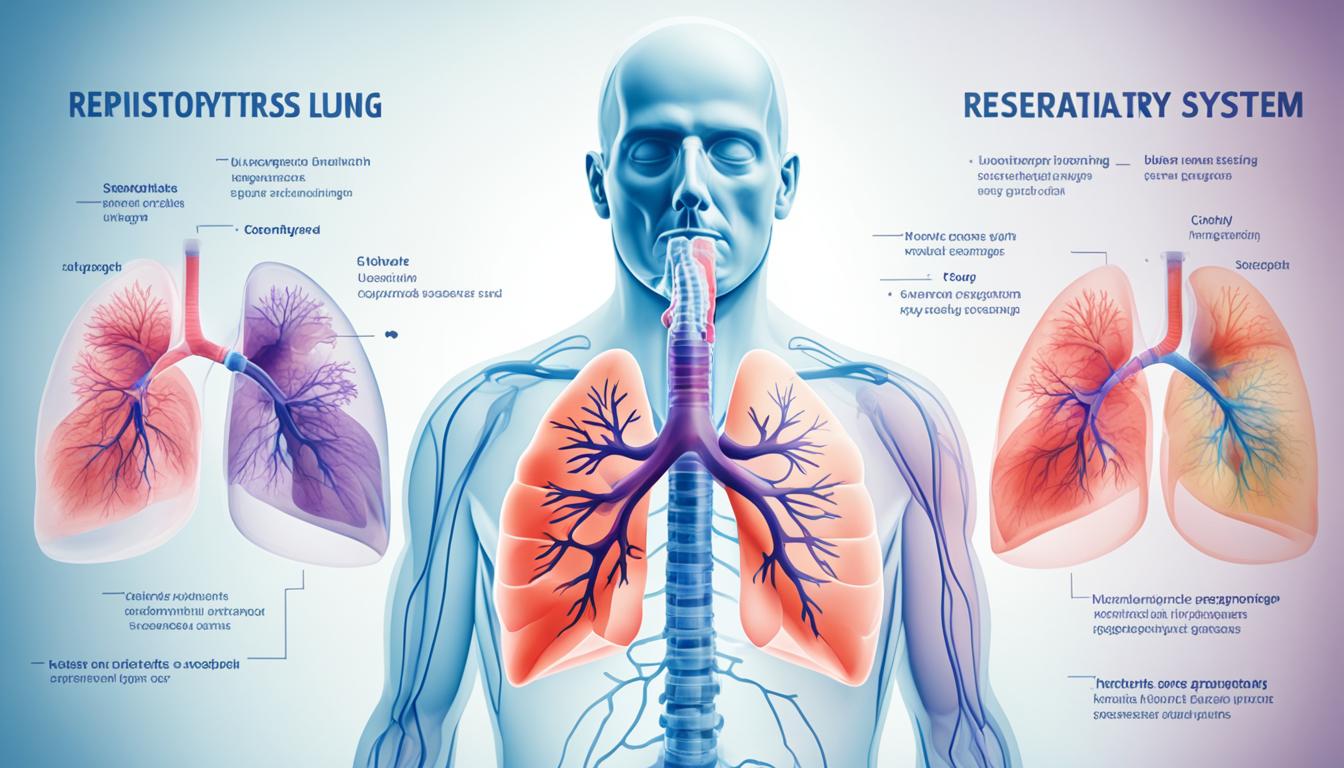Interstitial lung disease (ILD) is a group of lung issues. They cause the lungs to get inflamed and scarred. This includes conditions like idiopathic pulmonary fibrosis (IPF), interstitial pneumonia, and certain types of pulmonary fibrosis related to autoimmune diseases.
The main signs of ILD are a dry cough, struggling with breath, feeling tired, chest pain, and losing weight without trying. The causes could be autoimmune problems, exposure to harmful substances, certain drugs, infections, or it might run in the family.
Current ILD treatments mainly help with symptoms and slow down the illness. Fortunately, there’s hope for a better life and new lung growth – stem cell therapy.
Stem cells can help a lot in ILD care, especially mesenchymal stem cells (MSCs) and those from umbilical cords. They lower inflammation, change how scarring happens, start healing, and adjust the immune system. All these are great for treating ILD.
Key Takeaways:
- ILD refers to a group of lung disorders characterized by inflammation and scarring of the lung tissue.
- The primary symptoms of ILD include a dry cough, shortness of breath, fatigue, chest discomfort, and unexplained weight loss.
- Causes of ILD can range from autoimmune diseases and exposure to toxins or certain medications to infections and family history.
- Stem cell therapy, specifically using mesenchymal stem cells (MSCs) and umbilical cord-derived stem cells, shows promise in ILD treatment.
- Plexus Neuro Center in Bangalore, India, offers personalized stem cell therapy plans with significant improvements in patients’ symptoms and overall well-being.
Understanding Interstitial Lung Disease
Interstitial lung disease (ILD) includes many disorders. It causes inflammation and scarring in the tissue around the air sacs of the lungs. This scarring, called fibrosis, makes the lung tissue thick and stiff. As a result, breathing becomes tough.
ILD covers issues like idiopathic pulmonary fibrosis (IPF), interstitial pneumonia, and connective tissue disease ILD. Its main symptoms are a dry cough, shortness of breath, fatigue, and chest pain. Patients may also experience muscle and joint pain, along with weight loss.
Autimmune diseases, some medications, and radiation are possible ILD causes. Infections, certain lung conditions, family history, and toxin exposure can also lead to ILD. These factors start lung tissue inflammation, which eventually turns into scarring.
Stem cell therapy is a promising treatment for ILD. It uses special stem cells to reduce inflammation and help repair lung damage. Plexus Neuro Center in Bangalore offers such advanced ILD treatment. Their therapies are customized based on the patient’s specific needs and health goals. This approach has improved the life quality of many ILD patients.
Symptoms of Interstitial Lung Disease
- Dry cough
- Shortness of breath
- Fatigue
- Chest discomfort
- Muscle and joint pain
- Unexplained weight loss
Causes of Interstitial Lung Disease
- Autoimmune diseases
- Side effects of certain medications
- Radiation exposure
- Infections
- Hypersensitivity pneumonitis
- Family history
- Exposure to toxins
Diagnosis and Treatment of Interstitial Lung Disease
Diagnosing interstitial lung disease (ILD) is a detailed process. It aims to find the cause and eliminate other possibilities. Doctors look at symptoms and use tests like CT scans. They also check blood for markers and do lung biopsies.
The treatment for ILD works on easing symptoms and slowing the disease. Doctors often use corticosteroids and other drugs to lessen inflammation. They also recommend pulmonary rehab, which helps with lung function and well-being. Oxygen therapy can make activities and sleep easier. If the ILD is very advanced, lung transplant might be an option.
Getting a quick and correct diagnosis is key. It helps in starting treatment early to save lung function and life quality. With the right diagnosis and care, ILD patients can do better, slowing down the disease and enjoying improved breath health.
FAQ
Q: What is interstitial lung disease (ILD)?
A: Interstitial lung disease (ILD) is a set of lung disorders. They cause inflammation and scarring in the lung’s interstitium. The interstitium is the area around the air sacs. This scarring, or fibrosis, makes the lung tissue thicker and less flexible. It hampers the lungs’ ability to work as they should during breathing.
Q: What are the primary symptoms of ILD?
A: Main symptoms of ILD are a dry cough, breathlessness, feeling tired, chest pain, and joint pain. You might also lose weight for no clear reason.
Q: What are the causes of ILD?
A: ILD can happen due to autoimmune conditions or certain drugs. Radiation, infections, and family history can play a role. So can hypersensitivity pneumonitis and toxins you’ve been exposed to.
Q: How is ILD diagnosed?
A: ILD is diagnosed by eliminating other lung diseases and finding the root cause. Doctors use symptoms, scans like CT, blood tests, and lung function tests. A lung biopsy might be needed for a definite diagnosis.
Q: What are the treatment options for ILD?
A: Treatment focuses on symptom control, slowing the disease, and boosting lung health. Drugs like corticosteroids and immune suppressants help. Pulmonary rehab improves function and well-being. Oxygen therapy aids breathing. In severe cases, a lung transplant might be an option.
Q: Is stem cell therapy a viable option for ILD?
A: Stem cell therapy with MSCs or umbilical cord stem cells has promising benefits. It reduces inflammation, promotes repair, and helps regulate the immune response.
Q: Are there clinics that offer stem cell therapy for ILD?
A: Yes, places like the Plexus Neuro Center in Bangalore, India, provide advanced stem cell treatments. They have seen great outcomes, including better breathing and more energy in patients.
Q: What is the prognosis for ILD?
A: The outlook for ILD varies, but catching and treating it early is key. It helps in keeping lung function and life quality better.

